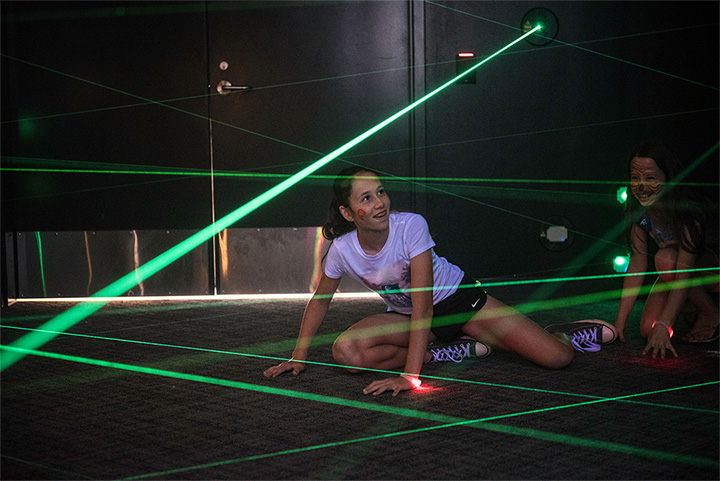Power of Play: Coordination
At Minnesota Children’s Museum, we believe in the power of play. Play is how children explore the world around them, navigate relationships, nurture curiosity and find joy. This post is part of a series showcasing seven powers of play: confidence, creative thinking, critical thinking, self-control, collaboration, communication and coordination.



What it is:
Coordination is a child’s awareness and control of their body and their ability to display strength, balance, precision and endurance.
What it looks like in action:
Kids who show coordination are acting with precision and maintaining balance, whether they’re in motion or still. When they attempt a physical task, they engage their muscles efficiently, with maximum energy directed to the task they’re trying to accomplish. They’re moving purposefully and able to focus on their goal. Kids who are coordinated feel a sense of control over their body and its ability to grow in strength and endurance.
Why it matters:
Coordination is fundamental to a child’s gross motor skills, like walking and running, as well as fine motor skills, like handwriting and eating. Kids who practice coordination can participate more fully in activities that promote physical health, like sports and exercise. They’re also able to gain independence by succeeding at tasks like tying their own shoes, drawing, using scissors, eating and cooking.
“True enjoyment comes from activity of the mind and exercise of the body; the two are ever united.”
-Wilhelm von Humboldt, Prussian philosopher


How play helps:
Free play is active. It provides countless opportunities for kids to practice big-movement coordination, like running, jumping and climbing, as well as fine motor skills, like drawing, puzzling and crafting.

Play prompts & activities to support coordination:
- Kid-friendly workouts or yoga routines
- Use kid-friendly tools to take things apart
- DIY laser maze
- Ball games

At home or on the go, caregivers can enhance children’s coordination by:
- Providing time and space for physical activity
- Cheering on bold attempts
- Making small, simple crafts accessible—safe scissors, pencils and paper, notebook paper for writing, yarn to practice tying or braiding
- Embracing repetition—coordination takes a lot of practice!
Powers of Play
Creative Thinking
At Minnesota Children’s Museum , we believe in the power of play. Play is how children explore the world around them, navigate relationships, nurture curiosity, and find joy. This post is part of a series showcasing seven powers of play: confidence, creative thinking,...
Communication
Power of Play: CommunicationAt Minnesota Children’s Museum, we believe in the power of play. Play is how children explore the world around them, navigate relationships, nurture curiosity and find joy. This post is part of a series showcasing seven powers of play:...
(Self) Control
At Minnesota Children’s Museum, we believe in the power of play. Play is how children explore the world around them, navigate relationships, nurture curiosity and find joy. This post is part of a series showcasing the seven powers of play: confidence, creative...
Collaboration
At Minnesota Children’s Museum, we believe in the power of play. Play is how children explore the world around them, navigate relationships, nurture curiosity and find joy. This post is part of a series showcasing the seven powers of play: confidence, creative...
Critical Thinking
At Minnesota Children’s Museum, we believe in the power of play. Play is how children explore the world around them, navigate relationships, nurture curiosity and find joy. This post is part of a series showcasing seven powers of play: confidence, creative thinking,...
Confidence
At Minnesota Children’s Museum, we believe in the power of play. Play is how children explore the world around them, navigate relationships, nurture curiosity, and find joy. This post is part of a series showcasing seven powers of play: confidence, creative thinking,...